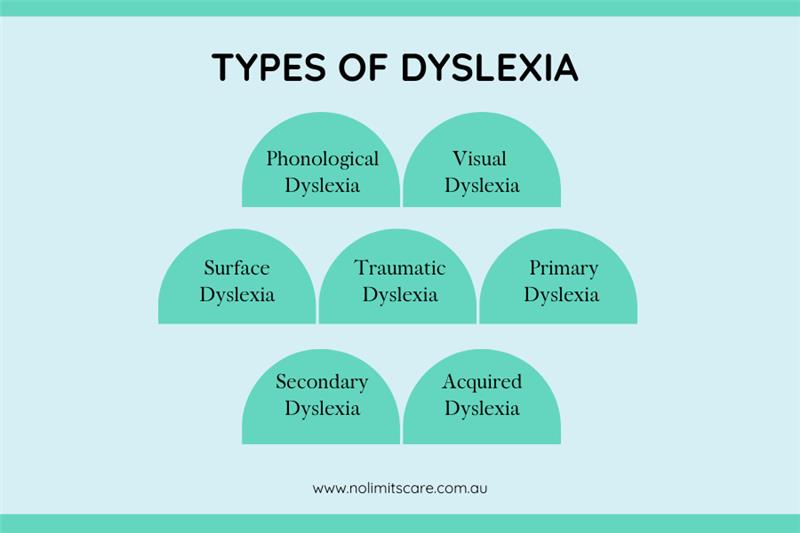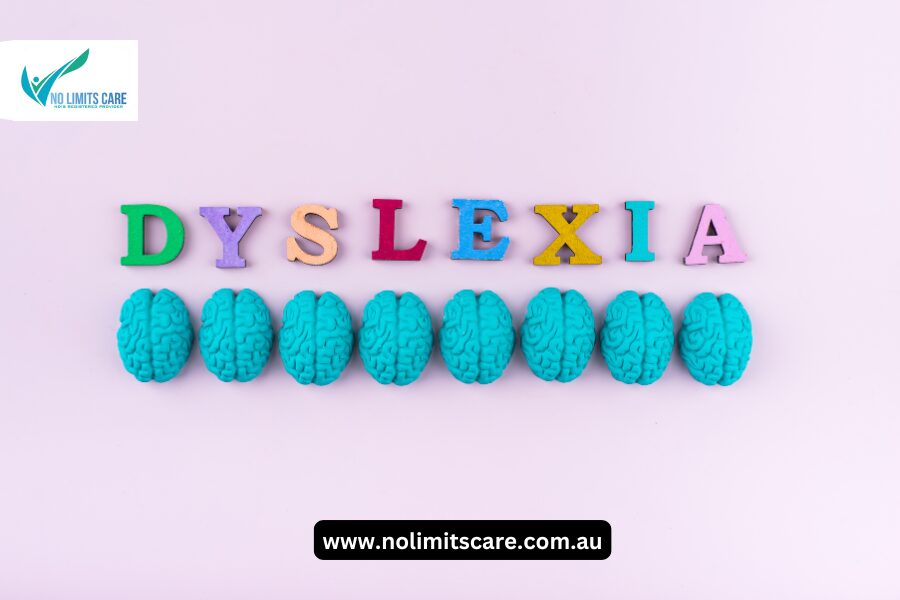Table of Contents
Learning disorder is one of the most common disability problems. Indeed, many people who suffer or people around them don’t know the meaning of “What is dyslexia?”. Many children face learning and reading challenges. You might have noticed that some people, even after being grown up, face massive challenges in speech delivery.
They also can’t read and write properly. It’s not something intentional. Knowing the concept of reading disorder becomes vital to have its proper treatment. We will not only speak about learning disorders, rather in this blog, we will also throw light on the types, causes and diagnosis of learning disorders, and treatment and support of dyslexia.
So, let’s begin the discussion to make sure you unlock your potential once you understand the depth of what is learning disability.
What is Dyslexia Under NDIS?
Dyslexia is a learning disability that restricts your reading and spelling. Your conditions become incurable. You can still have treatments that can help you improve. Learning Disorder is a lifelong condition. It cannot be fixed. So, this blog will give us deeper insights into what is dyslexia. It will also try to break some of the preconceived notions.
Types of Dyslexia

After you have known, learning disability. It’s also important to know there are different types of learning disorders. All these various kinds of dyslexia are:-
- Phonological Dyslexia – If you are facing phonological reading disorder, you are most likely to have the following symptoms:
- Difficulty breaking down sounds in words.
- Challenges to understanding the sounds representing the letters.
- Unable to recognise phonetics.
- This is the most common type of learning disability.
- Visual Dyslexia – In case, you can’t recognise words due to visual problems. Then, there might be confusion between visual dyslexia and visual challenges. Let us look into the symptoms of visual dyslexia.
- Problems with visual processing of text.
- Challenges to track down words on a page.
- You may think that texts are moving or blurred.
- You also have trouble with letter and word orientation.
- Surface Dyslexia – You can have some of the following symptoms of Surface Learning Disorders. These are:
- Problems to recognise whole words.
- Difficulty in reading irregular words.
- Developing a habit of reading words phonetically, even when incorrect.
- Challenges with sight word recognition.
- Traumatic Dyslexia – You can also have dyslexia after an injury or trauma. Let’s understand, what are its basic features:
- Your traumatic dyslexia can happen because of a brain injury or trauma.
- Damage to your language processing areas can lead to traumatic dyslexia.
- You can even have learning disorders if you’ve met with accidents, strokes.
- You can have sudden challenges in reading and writing.
- Primary Dyslexia – When you can’t identify the language, it’s called primary dyslexia. You have this challenge due to inherited genes or genetic mutation. Let’s discuss some of the main aspects of primary reading disorders:-
- Primary learning disorder tends to affect your left brain.
- It’s more likely to be consistent and persistent.
- You can have changes in your severity.
- Males have more chances to face this, than any female.
- Secondary Dyslexia – You can have this form of dyslexia when you’re in your mother’s womb. This is because You might have the following issues:-
- You can develop challenges due to developmental or hormonal issues.
- You might have some of the signs of secondary learning disorder, which are:
- Slow writing;
- Poor Handwriting;
- Inconsistent spelling;
- Reading slowly, or unable to read loudly properly;
- When you have a visual disturbance while reading. You can have blurred words or letters roaming around.
- Acquired Dyslexia – When you have reading disorder after a certain age, it’s called an acquired dyslexia. Some of these could be due to the following reasons:
- Acquired dyslexia can develop after you have learned to read.
- It can often result from brain injury or neurological conditions.
- This can impact your established reading skills.
- You need to have specialised rehabilitation aspects.
Now, as you know the types of learning disorders. Let’s understand the causes of dyslexia.
Causes of Learning Disability
When you get to know reading disability, it’s necessary to know what it causes. Some of the causes are:
| Types of Factors | Aspects |
|---|---|
| Genetic Factors | This dyslexia is more likely to be a hereditary problem. This means that you are more likely to have it if your parents have dyslexia. This can affect your brain development and language processing. |
| Neurological Differences | You might have learning disorders if you get differences in brain structure and function. You can have less neural efficiency in terms of language processing regions. |
| Neurobiological Factors | You can also have dyslexia due to differences in brain chemistry. You can see differences in neuronal migration during fetal development. |
| Environmental Influences | You can have dyslexia during early childhood nutritional factors. It can also happen if you have limited early language exposure. |
| Neurochemical Variations | You can have dyslexia because of differences in neurotransmitter functioning. It can have an impact on your learning mechanisms and information processing. |
| Brain Connectivity | Learning disorders can happen if you’ve differences in white matter structure. You also can have altered neural network efficiency. You might face challenges in rapid information processing. |
One thing you need to keep in mind is that: When you have dyslexia, it’s not from a single particular cause. It arises from multiple interconnected aspects. This focuses on genetics and neurobiological.
The next step is more important than knowing what is dyslexia. Yes, we need to move to the part that would help us to diagnose reading disorders.
Diagnosing of Learning Disorders
The main goal of knowing what is dyslexia is to diagnose it. Your learning disability can be diagnosed through the following processes:
- Initial Screening – You have a holistic medical and developmental history. Your family history is also evaluated. Your teachers, school psychologists, and primary healthcare providers conduct the initial screening.
- Professional Assessment Components :
Cognitive Assessments – You can have the following tests in this:
- Intelligence tests.
- Cognitive functioning analysis.
- Memory and processing speed evaluations
- Verbal and non-verbal reasoning tests.
Academic Achievement Tests include:
- Tests can access reading comprehension
- Phonological and decoding awareness tests
- Spelling and language processing examinations
- Writing skill assessment
Specialised Diagnostic Tools: You can have specialised diagnostic tools. These are:
- Comprehensive dyslexia-specific assessments
- Standardised reading tests
- Psychological evaluation instruments.
- Neuropsychological assessment batteries
Multidisciplinary Evaluation teams are:
- Educational psychologists
- Learning specialist professionals
- Neurologists
- Occupational Therapists
- Speech and language therapists
- Speech and language therapists.
They will help you understand your symptoms. They will allow you to get proper treatment as per your type and causes of learning disability.
Additional diagnostic techniques: Once you have all or some of the symptoms of learning disability. Now, you can have some of the techniques for testing the same. These are:-
- Brain Connectivity Assessments
- Cognitive mapping techniques
- Detailed language processing evaluations
- You can also have neuroimaging studies in some complex cases
Once it’s confirmed that you’re learning disorders. Now, you can move ahead with the treatment.
Treatment and Support Strategies
When we have covered the different aspects, we know what dyslexia is. You need to clarify one thing: NDIS Funding doesn’t cover this topic directly. You can have it only when you have other symptoms like intellectual delay or autism.
You can reach out to different institutions to treat this. These are:
You can reach out to different institutions to treat this. These are:
- Neurosensory can help you get learning support.
- Social service organisations or charity groups can help you afford the cost of learning disability.
- NDIS Occupational therapy helps to get personalised care.
- Some therapies are specifically for kids. These help them get speech therapy. It improves their language and verbal skills.
- If required, you can have these treatments in online mode
- You can have regular psychometric testing and psychological reports in Sydney.
- If you are confused regarding the right treatment, you should get it. You need to consult your Local Area Coordinator (LAC), General practitioner (GP), or anyone related to your NDIS Service Provider.
Embracing Potential: Your Dyslexia Journey with No Limits Care
While dyslexia is a learning difference that presents challenges, it is not a limitation on your potential. Understanding “what is dyslexia” is the first step towards empowerment. Although dyslexia NDIS support can be complex, No Limits Care specialises in navigating these pathways. We recognise that reading disability is not strictly classified as a disability under NDIS. We’re committed to finding comprehensive support solutions.
Our dedicated team understands your unique journey. We work closely with you to develop personalised strategies, access appropriate therapies, and unlock your true potential. At No Limits Care, we don’t see challenges – we see opportunities for growth, learning, and success. Follow us for more such content and get help in your journey towards unlocking your potential.


